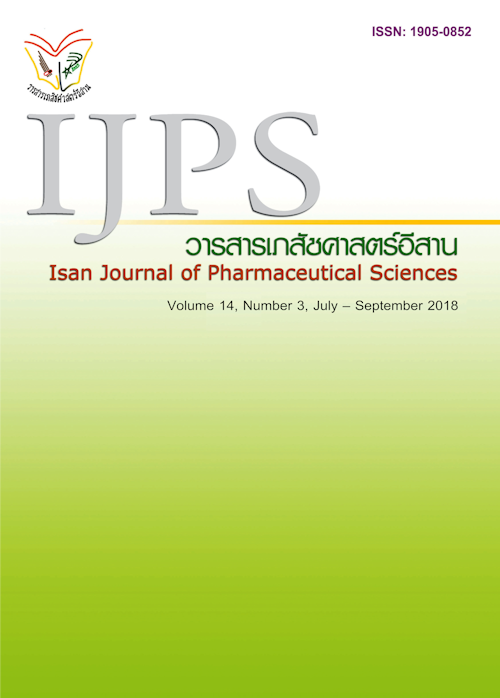Study of Deep Fried Banana Procedure of Food Stalls and Polar Compounds
Main Article Content
Abstract
Total polar compounds (TPCs) are the substance frequently found in repeatedly used frying oil and related to change of oil’s quality. Notification of the Ministry of Public Health (No. 347), B.E. 2555 (2012) requires the TPCs of cooking oils used for frying, mixing or as food ingredients should not exceed 25%. The objective of this research is, therefore, to study the levels of TPCs in frying oils and frying practices that affect levels of TPCs in eight fried banana stalls. The study consisted of an observational research to observe the practice of the fried banana cookers and the survey research to determine TPCs levels in the oils used. TPCs test kits were used to measure TPCs in the repeatedly used frying oil for 23 days. Tested oils were classified into ‘high risk’ and ‘low risk’ based on TPCs levels. Results on frying procedure showed that all fried banana stalls spent 2-4 hours a day. Most of them repeated the use of cooking oils and refilled with new oils at least once a day. Four kinds of food were fried in the same pan; deep fried banana, deep fried sweet potato, deep fried rice with grated coconut banana rolls recipe and deep fried taro by using palm kernel oil. Aluminum pan and sieve to filter the scrap were used. Frying temperature was between 120-170oC. Results on the determination of TPCs indicated high risk repeatedly used cooking oils in three banana stalls. The analysis on frying procedure concluded that frying procedure that affected the polar compounds were: 1) changing of frying oils every three days kept the TPCs levels within the acceptable standard levels 2) adding new oil to the repeated heated oil at 1:1 ratio at least three times a day also maintained the TPCs in the standard levels due to the dilution of TPCs.
Article Details
In the case that some parts are used by others The author must Confirm that obtaining permission to use some of the original authors. And must attach evidence That the permission has been included
References
Ariyapitipan T. Frying oil. AHS community volume 2 2005. Bangkok: Faculty of allied health sciences, Chulalongkorn University.
Ariyapitipan T. Selection and use of cooking oil for health. JNAT 2008 Jan-Mar; 43 (1), 35-41.
Jitbunjerdkul S, et al. The full report. The results of used repeated cooking oil into the quality of oil products and fried foods. Case study on fried chicken and eggs. Songkla: Prince of Songkla University; 2009.
Notification of the ministry of public health (No. 347), B.E. 2555 (2012) Re: food production procedure used repeated heating oil.
Siasakul C. Incremental frying oil life using adsorbent combinations [Master of Science]. Nakhon Pathom: Silpakorn University; 2005.
Sriviriyanupab W, editors. Revolutionary repeated frying oil by the test kit to consumer safety vendors can help Thailand 2008. Bangkok: Faculty of pharmaceutical sciences, Chulalongkorn University.
Weerakul J, Tassaneeyakul W, Mahakunakorn P, Porasuphatana S. Study on cytotoxicity and genotoxicity of repeatedly fried cooking oils by cell culture. IJPS 2009 Sep-Dec; 5(3): 235-242.


